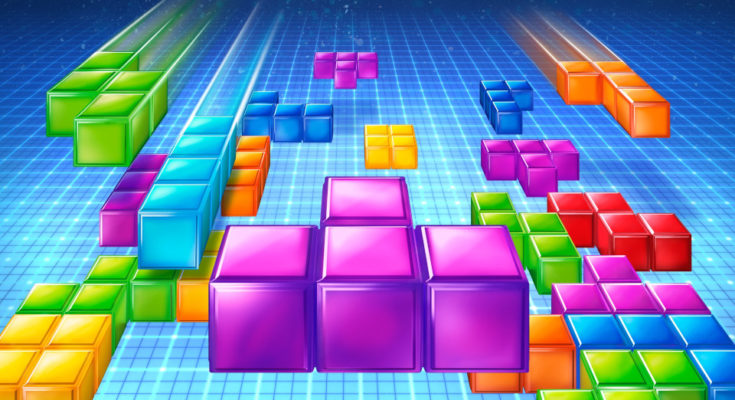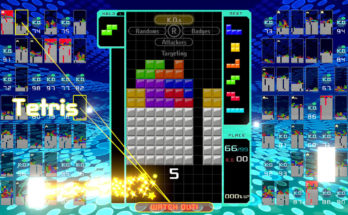
Esports became a global phenomenon in a very quick fashion. A lot of publishers are either interested in it or developed a huge esport structure around their games. But while a lot of competitive game genres are represented, we have a huge difference between the Strategy field or the Shooter field, with everything else. Sports games, fighting games, and card games don’t have the same following, as heavy-hitters like League of Legends or Counter-Strike.
Tetris is an odd case. It’s a puzzle game, and it had been on every major console generation. There are Tetris games for every platform, PC, Arcade, and Mobile included. Even VR, thanks to Tetris Effect. But the esport industry barely considers the game, or its whole genre, competitive enough to be an esport. Although, it hasn’t stopped a dedicated scene to grow and support their competition.
What about the BOOMS?

It’s hard to not talk about Competitive Tetris without mentioning the Classic Tetris World Championship. The competition around the NES version of the game, which quickly became a worldwide phenomenon. For a lot of people, the Classic Tetris videos and streams were their first contact with competitive gaming around puzzle games. And it did put a part of the community into the spotlight.
But just like how Super Smash Bros. Melee is drastically different than the other games of the franchise, and still has a huge competitive following that is in part with the most recent game of the series (Super Smash Bros. Ultimate), 1989’s Tetris isn’t the only variation of the Russian puzzle game that has a strong competitive community. 20 years ago, The Tetris Company, the owners of the Tetris IP, created an official series of rules that standardized the game. Every publisher that had a temporary hold on the IP, must have respected the official Guidelines. Thanks to that, the core aspect of each game, even if they were released by different publishers and developers, never really changed.
There are other solid and respected Tetris communities, like around Tetris: the Grand Master, Cultris, and others. But to be simple, this article will just mention two communities around the Tetris franchise.
Same pieces, different rules.

Bear in mind, NEStris and Guideline Tetris are two radically different games, requiring completely different skills. Expecting Jonas Neubauer to handle its own against the best Tetris players, would be like asking Usain Bolt to beat Roger Federer at Tennis. In no way does this take from Jonas’ talent, and his competitive domination over the NEStris scene.
NEStris is a single-player game. Even if those competitions have head-to-head matches and an amazing stream direction, making the whole competition incredible to watch, there’s no direct competition in NEStris. Players can’t interact with each other like you would in a fighting game. Matches in the CTWC are in reality 2-player score races.
On the other hand, Guideline Tetris is all about direct competition. The actions you do in your field will send damage to your opponents, represented by lines with one hole in it. The damage can be canceled before a player got any of it in their screens, by sending their lines, and directly countering the damage. It’s like when Ryu and Ken have their fireballs touching and disappearing.
So, NEStris is all about consistency in high-pressure situations, but you can be in your bubble and focus on your play. But in Guideline Tetris, at a high-level, you cannot just focus on your screen. You have to plan your attacks, according to what your opponent is doing. And that, on top of all things around T-Spins, Back-to-Back and Combos, that makes you win extra damage lines.
The first Spotlights.
Undeniably, the biggest chapter of competitive Guideline Tetris was made in Tetris Friends. An official, web-based Flash version of the game. The heart of it was Arena Mode, the competitive mode of the game. It has a Rank ladder and was fairly popular. It had its own Facebook version called Tetris Battle, which was more or less the same thing.
The entire community revolved around the game. The biggest competitions, like HardDrop’s Tetris Tournament Online (TTO), were made in the game, and some of them were even sponsored by The Tetris Company. It was the first competitive scene for a lot of people and was very popular.
This is where Guideline Tetris had some of its most interest. MidOne, (now OG, but former) Team Secret’s Solo Middle in DotA2, also competed in one of the TTOs and had a very good Top 16 performance. Another player started to be more and more popular in the Guideline community around the same time. At the peak of Tetris 99, the recent Battle Royale game on Switch, the American player Wumbo got a sponsorship contract from Spacestation Gaming.
A lot of players, and the community as a whole, did take Tetris Friends’ popularity momentum to build and maintain their competitive scene.
Friendly issues.
Unfortunately, Tetris Friends started to have more and more issues that people couldn’t ignore. Because it was a Flash game, and Adobe discontinued Flash Player, in 2019, The Tetris Company announced that both Tetris Friends and Tetris Battle will no longer be available. It was a shock for the scene, but at the same time, the writing was on the wall.

In 2013, The Tetris Company laid off 20 out of their 50 developers in their development studio. 3 years after the release of Tetris Friends, the game was already unsupported by their developers. One of the community’s private joke was the Arena Mode, still labeled as a “Beta” for 6 years. And to add insult to injury, the site was plagued by ad malware. The whole site was 2 times slower if you weren’t activating an ad blocker. Without forgetting essential mechanics that were locked behind a paywall in Arena mode.
TTC decided to only focus on protecting their brand, and leave the game part to the publishers they are in partnership with. That let the competitive community on PC hanging for a future Tetris Friends replacement, that never came.
“Fine, I’ll do it myself.”
Like Counter Strike in 1999, or even the Super Smash Bros. Brawl mod Project M, the Guideline Tetris community decided to take the task of producing their competitive games. They were ways to continue the community’s life, on brand new platforms.
There is a handful of notable examples. Tetris Online Poland was a mod of Tetris Online Japan. The game was only released in Japan, but after the servers shut down in 2011, somebody else picked the project and made unofficial servers of it. Jstris is a notable example, because the game is web-based, and focused on raw speed. And shortly after, Worldwide-Combos came in, which focuses on head-to-head matches.
But there’s one that is getting a lot of attention lately. The name’s Tetr.io, and it was released in March 2020. What makes it different above the other unofficial clone, is its Y2K design, and its great 16-bit soundtrack. Some of the tracks would perfectly fit in a Japanese RPG on the Super NES. It recently opened its 1v1 Online Ranked mode, and just like Jstris, its Quickplay is close to the Tetris 99’s “Battle-Royale-ish” gameplay.
It blew away tons of the expectations anybody in the Guideline community could have, and it has been a better experience on PC than anything approved by TTC.
The Glass Ceiling.

But as good as a game like Tetr.io can be for the scene, it will be almost impossible to see a game like this being presented as a legitimate esport title. Simply because TTC never approved it as an official title. Because of it, every one of those clones, despite being some of the only real alternatives for the PC community, lives under the Damocles’ sword of potential Cease-and-Desist action by the legal owner of the brand.
That contrasts heavily with the actual support and sponsoring of The Tetris Company, to the Classic Tetris World Championship. Last year, Alexey Pajitnov himself, the one behind the brand, assisted the event and congratulated the winners. This is still the same company that stopped supporting a game loved by the community by laying off almost half of their development team and waited 6 years before shutting down the project.
It’s a tough situation for a community that stood for so long over the years. As an avid Guideline Tetris player myself, I would want nothing but the best for the overall scene, and truly think that there’s an unexploited potential for something new for the esport industry.


